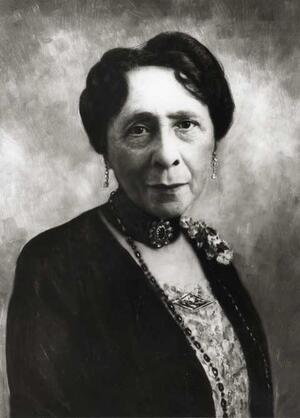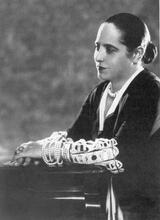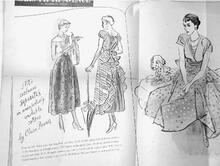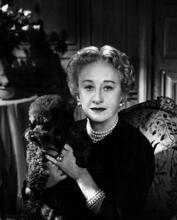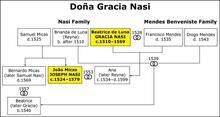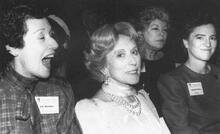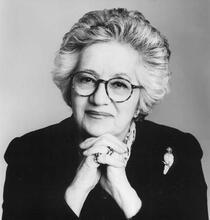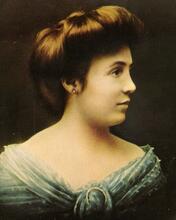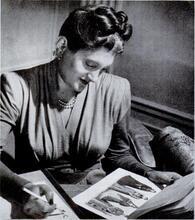Mary Ann Cohen Magnin
Mary Ann Cohen Magnin rose to stunning success at the turn of the twentieth century as the founder of I. Magnin and Company, an exclusive chain of women’s clothing stores. In 1875, Magnin, her husband, and their children moved to San Francisco, where Magnin opened a store in which she made and sold baby clothes, lingerie, and women’s clothes. By keeping the ever-expanding store open after the San Francisco earthquake of 1906, she both ensured salaries for her employees and made clothing available to those who had lost essentials in the disaster. Later, Magnin groomed her sons to manage the business. Despite officially retiring, Magnin continued to inspect and oversee daily operations until shortly before her death.
Article
Energetic, stubborn, with an outstanding intuition for business—this was Mary Ann Cohen Magnin, the founder of I. Magnin and Company. Until her death at age ninety-four, Magnin took an active interest in the stores, which specialize in exclusive women’s clothes.
Mary Ann Cohen, the daughter of a rabbi, was born in Scheveningen, Holland, in 1850. She immigrated with her parents to London, England. On October 8, 1865, in the Great Synagogue in London, she married Isaac Magnin, born in Assen, Holland, in 1842, a carver and gilder. They had eight children: Samuel, Henrietta, Joseph, Emanuel John, Victor, Lucille, Flora, and Grover.
In 1875, the family traveled around Cape Horn to San Francisco. To help support the family, Magnin opened a small store and began sewing and selling lace-trimmed baby clothes, lingerie, and bridal trousseaux, an art she had learned from her mother. By 1877, she had established I. Magnin and moved to a larger, more prominent location. Although the store was named for her husband Isaac, he took little interest in the business, preferring to spend his days discussing socialism and philosophy. Isaac Magnin died on January 27, 1907.
I. Magnin & Co. moved to even larger and more fashionable quarters as the business district of San Francisco changed. The store always cultivated a wealthy clientele. In 1906, after the earthquake and fire that destroyed much of San Francisco, Magnin moved merchandise from the Customs House, which was not damaged, to her home and continued to operate the store. This not only helped those who had lost everything, but was also a wise business decision, as clothing was in demand.
As her children grew older, the girls were trained in handwork, while the boys were brought into the business. The boys worked in the store, learning every part of the business. Emanuel John, the third son, was singled out by his mother for his business ability and sent to New York to handle the buying for the store. Grover, the youngest, was picked by his mother to head the San Francisco store. Joseph, overlooked by his mother, eventually left I. Magnin’s to found his own store. This caused a deep rift in the family.
It is impossible to separate Magnin’s business and family life. She ruled her store and her family with strict dedication. Although she officially handed over the business to her sons forty years before her death on December 15, 1943, she continued to make daily inspection tours of the stores and staff until her last days.
A century later, Mary Ann Magnin would have been widely recognized in the business world. However, because of the conventions of the nineteenth century, her role in the development of the department store chain is little known.
“Founder of I. Magnin & Co. Dies at 95 [sic].” San Francisco Chronicle, December 16, 1943.
Magnin, Cyril. Oral history, 1976. Western Jewish History Center, Berkeley, California.
Magnin, Cyril, and Cynthia Robins. Call Me Cyril (1981).
Magnin, Edgar Fogel. Oral history, 1975. Western Jewish History Center.
Magnin Family Papers. Archives. Western Jewish History Center.
Mullane, James Thomas. A Store to Remember. San Ramon, CA: Falcon Books, 2007.

